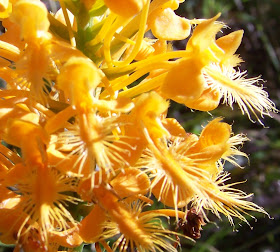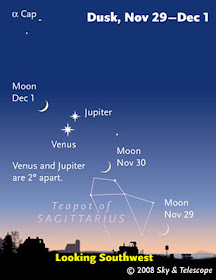Today is turkey day. But what I look most forward to is stuffing. See most people call it stuffing, because you stuff it in the turkey. I call it stuffing, because I stuff it, as much as humanly possible, in my mouth. Oh, yeah. Comfort food, bring it on!!! So, after spending the majority of the day cramming my face full of stuffing and other high-carb dishes, I was ready to go for a walk, or in my case a waddle, with my sister.
We went next door to the cemetery, one of my favorite places to walk. We had two dogs and my sister's sister-in-law in tow.

Seal, my nephew's dog, was having a great time, making sure we all saw the squirrels. "Hey, guys, are you paying attention! There is a SQUIRREL over there! If we RUN, we might catch it!"

Sissy, could care less. She is not thrilled that Seal is here for a visit. "Squirrel, shmirrel, you are ruining my walky. Why are you here? When are you leaving, you hyper yellow dog that eats all my treats? GRRRRR!"
As we were out and about, admiring squirrels and checking out gravestones, I marveled at the huge White Cedars,
Thuja occidentalis, that were planted around the cemetery. Another name for them is Arborvitae, literally meaning Tree of Life (arbor-tree, vitae-life). How ironic!

The story of how the White Cedar got the name Tree of Life is an interesting one. In the 1530's, French explorer, Jacques Cartier was on an expedition along the St. Lawrence River. He had a crew of 110 men and two Native American youth. Almost the entire crew was suffering from
scurvy, a terrible disease that causes swollen joints, nosebleeds, bleeding gums, extreme fatigue, chronic diarrhea, bone fractures, tooth loss, purple spots under the skin and death. On their way up the river, he dropped his young guides off at their home village, thinking that they were close to death. Ten days later, he passed by the village and found the boys completely well! He asked how this was possible and was taught how to chop and boil the leaves of the White Cedar to make a potent drink. In deep gratitude for curing their sickness, the explorers carried the tree back to France. The miraculous tree was named “l’arbor de vie” by the King of France and planted in their medicinal gardens.

What a majestic and stunning tree. Compare how tall it is to the fence behind it.
 I love the flattened, scale-like leaves of Arborvitae. It also has a very pleasant scent.
I love the flattened, scale-like leaves of Arborvitae. It also has a very pleasant scent.
I thought the story was very appropriate today. Realizing many of the first explorers to America, the pilgrims included, often did not get enough nutrients to stave off horrible diseases. It is good to take pause and give thanks for all the sacrifices that were and are made to get us to where we are today.


 Monarch Ovipositing in April
Monarch Ovipositing in April Green Salamander
Green Salamander Hummingbird Moth on Common Milkweed
Hummingbird Moth on Common Milkweed Spider and Wasp interaction. Photo By Jim McCormac.
Spider and Wasp interaction. Photo By Jim McCormac. Wheel Bug on False Sunflower
Wheel Bug on False Sunflower  Black Widow
Black Widow Harvester Butterfly on Horse Dung
Harvester Butterfly on Horse Dung Fishing Spider
Fishing Spider Crested Coral Root Orchid
Crested Coral Root Orchid
 Pink Lady Slipper Orchid
Pink Lady Slipper Orchid Devil's Urn Fungus with Tiny Spiders Inside
Devil's Urn Fungus with Tiny Spiders Inside Doe near Side of Road at Eagle Creek
Doe near Side of Road at Eagle Creek
 My sister, Joyce, and I were headed across State Route 741 near Lebanon, OH around 4:30 pm today and witnessed the most amazing sight. We noticed the clouds near the sun were lit up with color, blending from rich orange to yellow to a pale green and a hint of purple. It looked like a short rainbow, but it was not raining. We found out later that this strange atmospheric anomaly is called a parhelion or, the word I prefer, sundog.
My sister, Joyce, and I were headed across State Route 741 near Lebanon, OH around 4:30 pm today and witnessed the most amazing sight. We noticed the clouds near the sun were lit up with color, blending from rich orange to yellow to a pale green and a hint of purple. It looked like a short rainbow, but it was not raining. We found out later that this strange atmospheric anomaly is called a parhelion or, the word I prefer, sundog.
 I was so glad to share this unexpected and beautiful event with my sister on Christmas Day!
I was so glad to share this unexpected and beautiful event with my sister on Christmas Day!

 This is a photo my friend
This is a photo my friend 


















 Sissy, could care less. She is not thrilled that Seal is here for a visit. "Squirrel, shmirrel, you are ruining my walky. Why are you here? When are you leaving, you hyper yellow dog that eats all my treats? GRRRRR!"
Sissy, could care less. She is not thrilled that Seal is here for a visit. "Squirrel, shmirrel, you are ruining my walky. Why are you here? When are you leaving, you hyper yellow dog that eats all my treats? GRRRRR!"



 While out there at Goose Pond, where there is very little light pollution, we grabbed the opportunity and looked at some of the other stars and planets in the sky. Don shared this great website, Sky and Telescope, that describes what one can see in the sky each night. This week, Jupiter and Venus are almost in alignment. Click on the link below to see what is happening in the night sky each week.
While out there at Goose Pond, where there is very little light pollution, we grabbed the opportunity and looked at some of the other stars and planets in the sky. Don shared this great website, Sky and Telescope, that describes what one can see in the sky each night. This week, Jupiter and Venus are almost in alignment. Click on the link below to see what is happening in the night sky each week.



